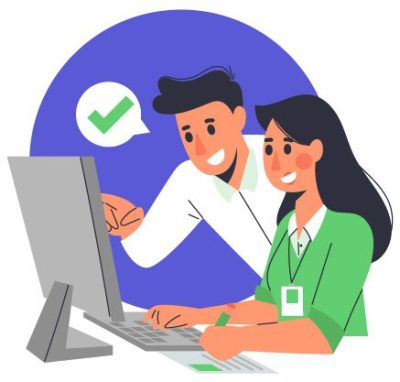What is Blended Learning? Why is it getting more preference among the learning industry in recent times? According to research, 82% of students prefer blended learning over class teaching environments. Blended Classrooms save around $2400 per student.
Blended learning is an educational approach that mixes online and offline learning. Both complement each other and give users a chance to explore both worlds. It is also known as hybrid learning and is available in many forms. Online learning lets the learner study at their preferred place and pace.
However, some subjects work best when demonstrated in real life. Below we discuss all you need to know about this.
Types of Blended Learning
There are many types of teaching in blended learning. Some include flipped classrooms and lab rotation. Below we discuss some.
-
- Flex Learning: Flex learning is a type of learning model that entails flexibility. Online learning is essential in this mode because teachers offer guidance where necessary.
-
- Individual Rotation: This learning type resembles the lab rotation and station models. It is designed to cater to individual student’s needs. However, it does not need every learner to visit the station.
-
- Station Rotation: Here in this blended learning model, learners rotate using several stations on a tight schedule. One of these stations occurs online.
-
- Lab Rotation: The lab rotation model resembles the station rotation. However, the main difference is that online classes happen in a specific computer lab. Lab rotation gives the learners improved flexibility as they use the available resources.
-
- Online Driver: This blended learning model happens entirely online, unlike the other forms. The learner takes full charge, and they can reach the instructor via email, message, or chat. This model is highly flexible to students where they can utilize their time to learn things irrespective of a field time schedule. This model doesn’t contain any face-to-face sessions.
-
- Enriched Virtual Learning: Most course tasks are completed remotely using this model. Students have to take one-on-one sessions than regular classroom sessions. Unlike other learning models, learners attend actual sessions when necessary. This means there are limited classroom experiences.
Benefits of Blended Learning
It also required to discuss the advantages and disadvantages of blended learning. Below are some advantages of blended learning;
-
- Enables you to improve training engagement using webinars
- Lets you attend real-time and asynchronous training
- Allows you to extend your programs to touch on physical subjects
- You can receive immediate feedback via an ILT session
- It enables instructors to know their learner’s performance in actual time.
To learners, blended learning has the following benefits;
-
- It offers flexibility and convenience because they can control their learning pace
- It provides a better understanding of the course
- It supports social learning because learners can interact with their instructors.
Organization benefits;
- Blended learning helps organizations trace people who have or have not completed training.
- It lowers face-to-face learning expenses like traveling
- Organizations will have a better engagement due to the several learning techniques
- It is a great way to invest because of its effectiveness.
Disadvantages of Blended Learning
We also need to check the disadvantages of this learning model. Below we discuss some top setbacks.
Learner disadvantages;
-
- Students lack direct contact. Even though self-controlled learning is beneficial, learners might struggle to find solutions online.
- Not all students will get fair access to resources, and this makes learning challenging. The hybrid model learning needs the learners to use technology outside the class.
- Learners with dissimilar digital literacies might fail to access technology learning.
Tutor disadvantages;
-
- Instructors might lack resources to implement this learning. At times, the infrastructure might also lack.
- It takes a lot of time to shift to a blended model. They also need enough preparation and training. This is hectic to manage alongside other requirements.
What Makes Blended Learning Effective?
Have you ever asked yourself how to deliver blended learning? And what makes it effective? Below we discuss why
-
- It Accounts for Every Student – Blended way of learning puts every learner’s needs into consideration by customizing content.
- It is Cheaper – Class learning might seem cheaper than e-learning, but face-to-face sessions are costly. You will spend time away from work, pay the tutors, among other activities. Hybrid learning will cut traveling costs and other related expenses.
- It is Engaging and Fun – This will be an engaging experience in all aspects. Learners use offline classes to suit a specific learning style.
Final Thoughts
The Hybrid learning model has become more common over the past few years. Thanks to the development in technology. Especially pandemics made most of the teaching institutes adopt the new learning model. This approach lets learners mix both online and actual classes for maximum effect 73% of teachers say that blended learning increased engagement among students.
In case you need to find out more about hybrid learning eduJournal.com will come in handy.




Please enter input field